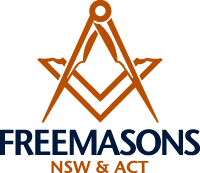
The Vegemite story

Melbourne born Fred Walker is probably not well known in masonic circles but his products are known Australia-wide and overseas.
Walker, a merchant and industrialist, was born in January 1884, educated at Caulfield Grammar School and in 1899 joined the produce and export merchants J Bartram & Sons where he quickly acquired a knowledge of canning and refrigeration.
In January 1903, Fred Walker, just 19 years of age, travelled to Hong Kong where he began his own import and export business. He returned to Melbourne in 1908 to establish a local import and export business which concentrated primarily on food products. He began to can meat, butter, dripping and cheese which he branded ‘Red Feather’ and these products were successfully exported to Asia and South Africa.
Although prior to the First World War, Walker had served in the volunteer Australian Garrison Artillery and as a captain in the 13th Infantry Brigade, his canned foods, which were exported to England, were considered essential and Walker, as a consequence, did not join the AIF.
In 1918, Walker began manufacturing Bonox. It created the slogan ‘coffee, tea or Bonox’ and it was a favourite with a dash of rum. Walker extended his business to Sydney in 1918 and to Adelaide and New Zealand the following year.
World trade arrangements following the war left Walker’s business floundering and he faced heavy financial losses. His foresight and flair for technology were not matched by his business skills and he became in debt for 80,000 pounds. Nevertheless, he convinced his bankers and creditors to support the formation of a new company, Fred Walker and Co, and with his creditors accepting debentures to the value of his debts and with a board of directors chaired by Sir Edwin Nixon, Walker, as managing director, set about re-building his business.
Walker realised that if business was to succeed, he would need professional help and in 1923, with the business still struggling, he decided to develop a yeast extract for retail sale. He then employed Cyril Callister to develop the product which Walker would market as Vegemite. But why Vegemite? The company executives could not decide on a name so they ran a competition. The public response was overwhelming and so Fred’s daughter Sheilah pulled the name out of a hat.
Yeast extract was known overseas but the process had to be developed in Australia from scratch which Callister successfully did in 1923 from brewers yeast and Vegemite was put on the market in early 1924 with the slogan ‘put a rose in your cheeks’. Vegemite, which is one of the world’s richest known sources of Vitamin B, was sold in small opal glass jars with what was known as a ‘phoenix’ seal to keep the contents fresh, and tins of various sizes.
Sales of Vegemite, advertised as ‘pure vegetable extract’ were slow at first and cartons were returned to the factory from retail outlets. Minor changes were made to the product and sales improved. In 1928 Walker decided to change the name to Parwil, intended as a word play on the English product Marmite, but he quickly realised his error and Vegemite was reintroduced.
In 1933, Sisters at baby health centres across the nation were recommending vegemite for both nursing mothers and children. Adults also enjoyed the product and Vegemite has gone to war with Australian troops ever since. Australians now go through more than 24 million jars each year.
In the late 1930s, with the Depression behind them, Walker had traded himself out of his financial difficulties. In 1931, Callister, one of Australia’s foremost food technologists, was awarded the Degree of Doctor of Science.
Walker became president of the Melbourne Rotary club in 1933–34, a generous benefactor of the Boy Scouts program for underprivileged children, a director of the YMCA, and the Fred Walker prize for postgraduate chemistry at the University of Melbourne commemorates his name. He died aged 51 in July 1935. Walker became a mason in Melbourne Austral Temple No 110, Victorian Constitution on 9 July 1919, passed 7 November 1919 and raised on 14 April 1920. He remained a lodge member until his death.
Article extracted from Freemason magazine, December 2014, page 14.


